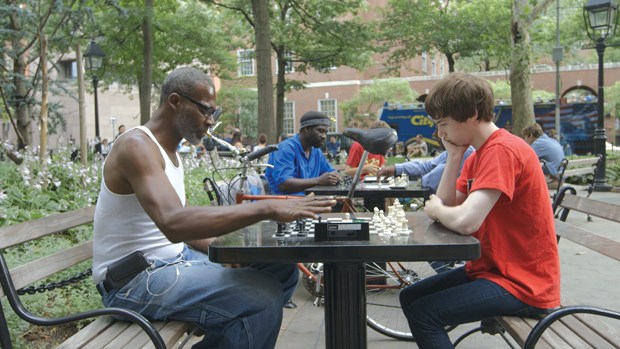DOXA Documentary Film Festival, until May 15. For complete schedule go to doxafestival.ca.
The fire rushes through California’s forest, leaping up redwoods and growing with every gust of wind. One of Marin County’s firefighters will battle the blaze, saving lives and homes. When she’s done, she’ll go back to her cell.
The firefighter/convict is one of the subjects of Brett Story’s disturbing documentary The Prison in Twelve Landscapes.
The film never shows us the firefighter’s face, nor does it take us inside a prison. The movie is less about the physical structure of a prison and more about a system whose tentacles stretch across the country like an H.P. Lovecraft monster.
Rather than a traditional jailhouse movie about guilt redeemed or innocence recognized, Story focuses her documentary on the people outside the walls, and on the prison-industrial complex.
When U.S. President Dwight D. Eisenhower was readying to leave the White House in 1961, he punctuated his parting speech with a dire warning.
“The total influence: economic, political, even spiritual, is felt in every city, every state house, every office of the federal government,” he said. “The potential for the disastrous rise of misplaced power exists, and will persist.”
He was talking about the military-industrial complex, but this movie shows he could have just as easily been discussing the country’s multi-billion dollar prison system.
Story introduces us to one St. Louis ex-con whose crime was improperly securing the lid of a garbage can. Unwilling to pay the steep fine, she goes to prison.
“These municipalities are funding their garbage collectors through over-fining poor black residents,” Story says.
Approximately a quarter of the world’s prisoners, 2.2 million criminals, are doing time in United States jails and prisons. The incarcerated population has grown 4.5 times since 1980, primarily due to drug arrests, according to an article from U.S. News and World Report.
Prisons are also expanding in Canada, with plans for nearly 500 new bunks for offenders in minimum-security prisons around B.C.
“I was really interested in how prisons themselves are farther away and harder to access than ever before,” she says. “They’re actually expanding and yet we don’t see them and therefore don’t think about them.”
Utilizing wide shots of bleak landscapes and intimate portraits of her subjects, Story takes the viewer from eastern Kentucky to Detroit to Ferguson, Missouri to the chess tables of Washington Square Park in Manhattan.
In Kentucky, a long-time resident walks across a valley that was a mountaintop until a coal-mining company levelled it and stripped the ground. Unburdened of mining jobs, the community’s biggest employer becomes its prison.
“It’s recession proof,” a Kentucky man explains to Story. “You close a factory and you ship the jobs overseas. You can’t do that with a federal prison.”
U.S. President Barack Obama made headlines last year when he tweeted: “We could eliminate tuition at every public college and university in America with the $80 billion we spend each year on incarcerations.”
The president’s notion of squandered talent comes to life when we meet Nahshon Thomas as he appraises his chess opponent over the turret of a castle.
He strategizes but never seems to strain as he passes his days winning $5 chess games in Manhattan’s Washington Square Park.
As an audience, we wonder if his intellect couldn’t be put to some other use.
“It’s really an invitation for people who think that their lives don’t have anything to do with the criminal justice system,” Story explains. “Those of us who think we’re outside of it somehow, that it has nothing to do with our lives, to actually feel implicated.”
Sometimes we’re implicated directly, like when we hear messages left for prisoners in Attica, and other times we’re left to make our own connections, such as when Story guides us through a mortgage loan company spearheading an urban revitalization project in Detroit.
Bruce Schwartz acts as a spokesman for Quicken Loans, showing us how safe downtown has become while discussing the spiraling rent.
While he speaks, Story cuts to a shot of a few black people in the distance, suggesting they’ve been excluded from the revitalization.
“You really feel that when you’re downtown that downtown Detroit is a much whiter space than it ever has been before,” Story says.
Story has tackled other social justice issues including housing and poverty, but somehow, “they lead back to the issue of incarceration in one way or another,” she says.
Socialist presidential candidate Eugene V. Debs famously said: “While there is a soul in prison, I am not free.”
By looking at prison-enforced fines and police-bred fear and even cellphone bills, Story’s film grants Debs’ words a prophetic quality.
Justice can be a calling and a philosophy, but this film shows us justice as a business.



